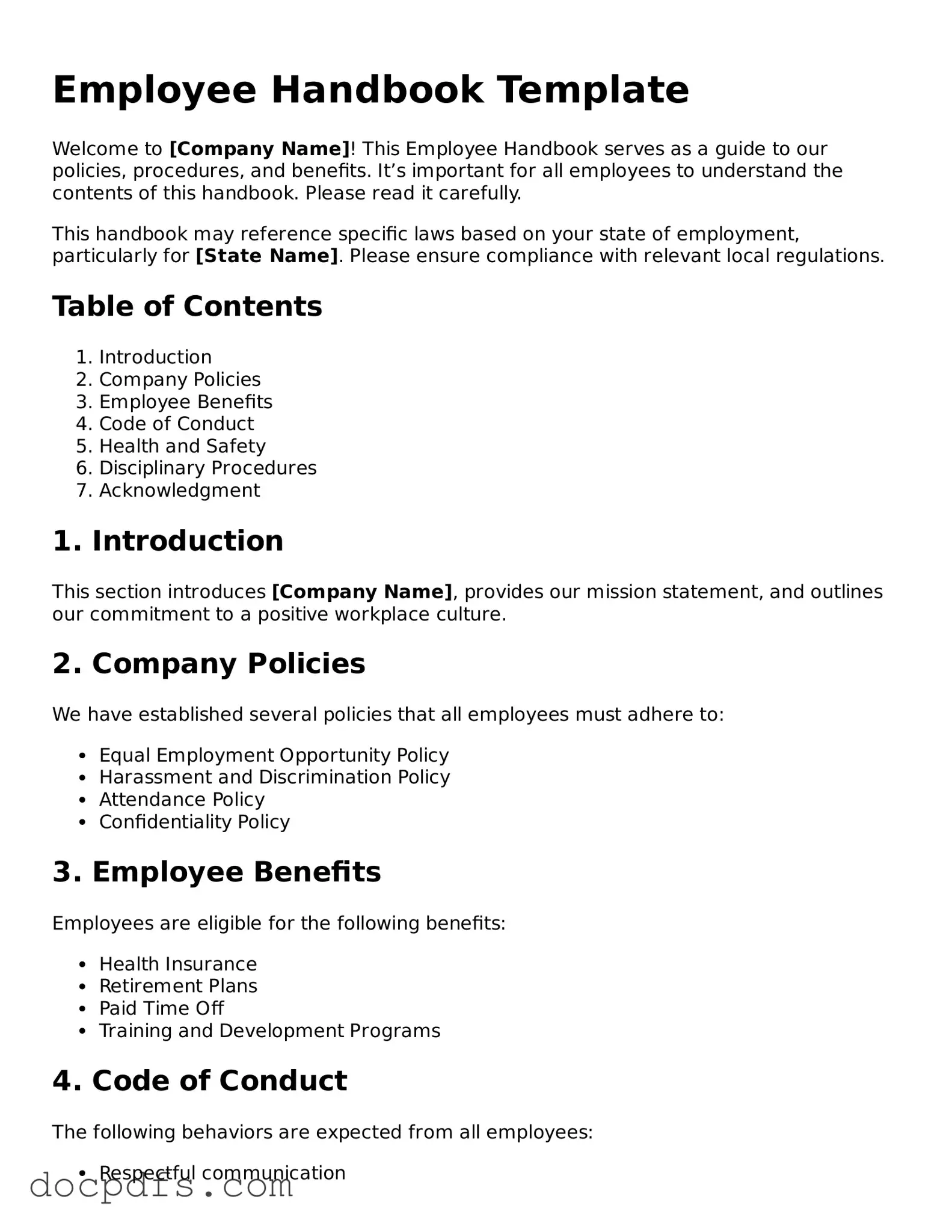Legal Employee Handbook Document
The Employee Handbook form is a crucial document that outlines a company's policies, procedures, and expectations for its employees. It serves as a guide to help employees understand their rights and responsibilities within the workplace. By clearly communicating these guidelines, the handbook fosters a positive work environment and promotes compliance with company standards.
Open Employee Handbook Editor Now
